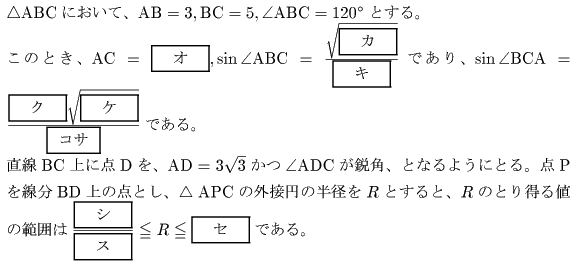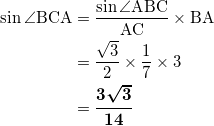第2問[2]

解答
オカキクケコサ
余弦定理より、
![]()
より、AC = 7。
また、暗記している角度であるから、![]() である。
である。
最後に、まず正弦定理より、
![]()
が成り立つので、これを解いて、

である。
シスセ
外接円の半径 R は、正弦定理より、
![]()
で与えられる。
今、A, B, C, D, P の位置関係は図は以下の通りで(図は後日挿入)、線分APの長さは、点PがBからDまで動く間に様々な値を取る。
APが最小となるのは、点PがAから線分BD上への垂線の足の位置であるときで、そのときのAPの長さは、![]() である。よって、Rの最小値は、
である。よって、Rの最小値は、
![]()
である。
次に、APが最大となるのは、PがDと一致するときで、![]() である。よって R の最大値は、
である。よって R の最大値は、
![]()
である。

コメント